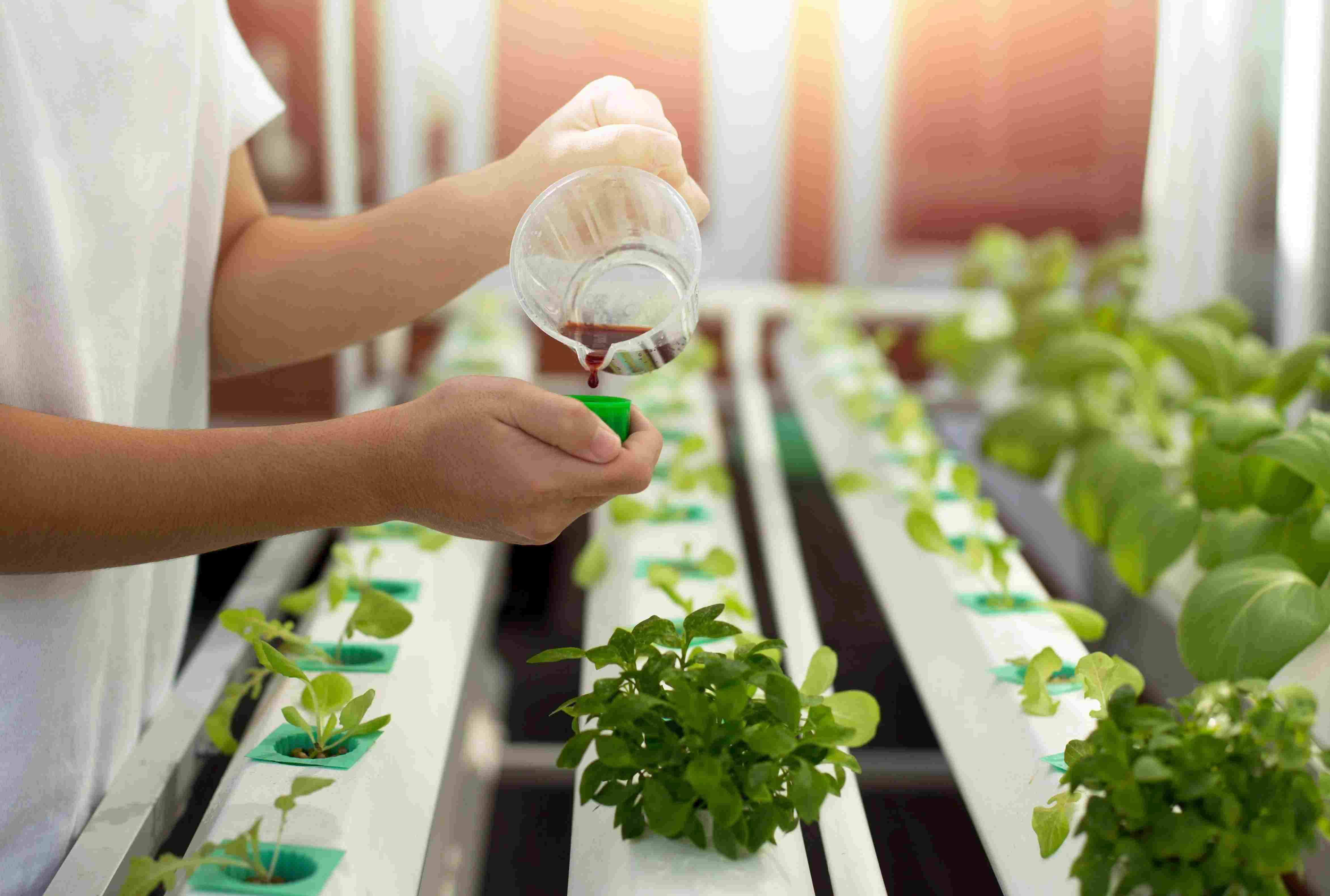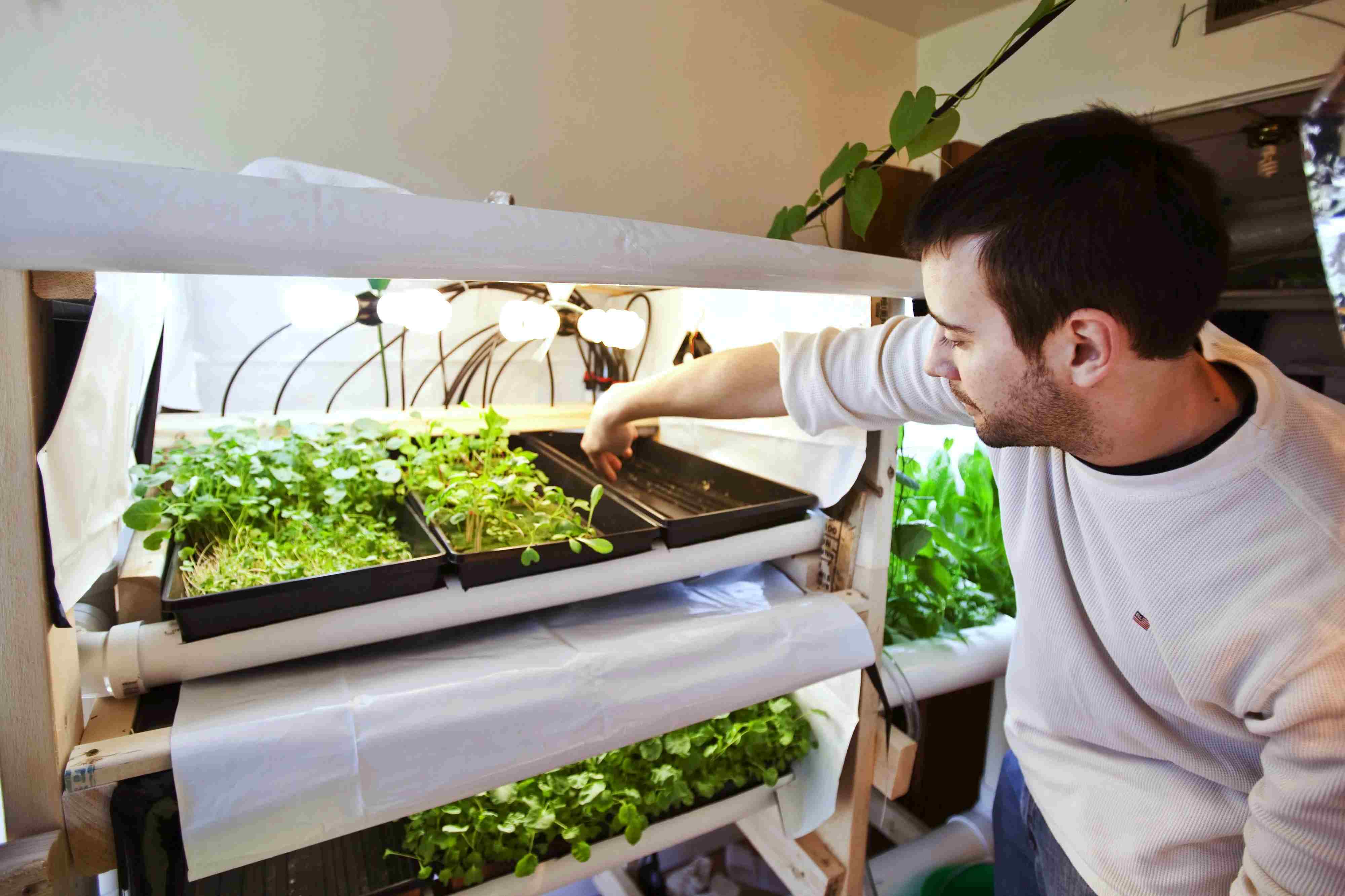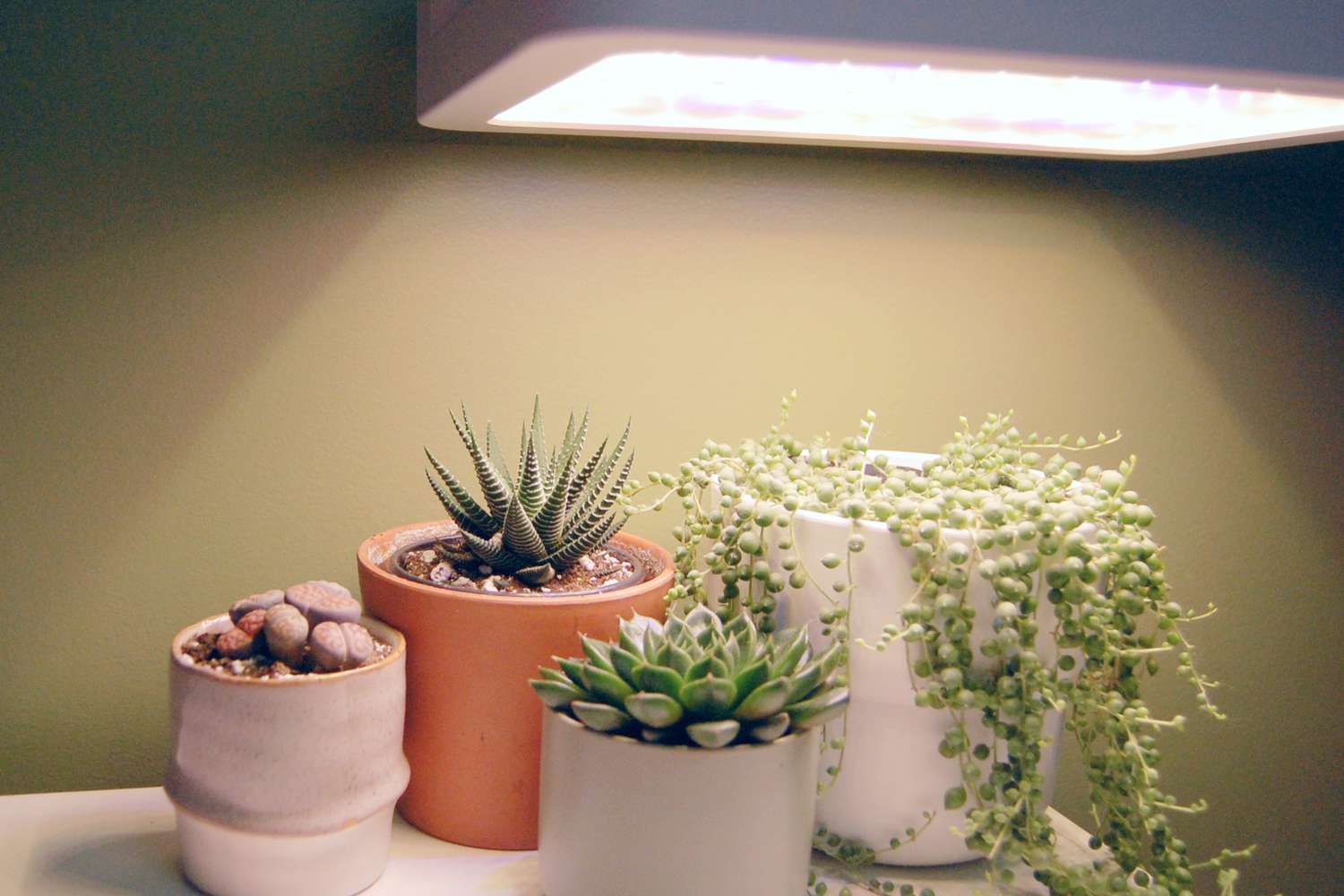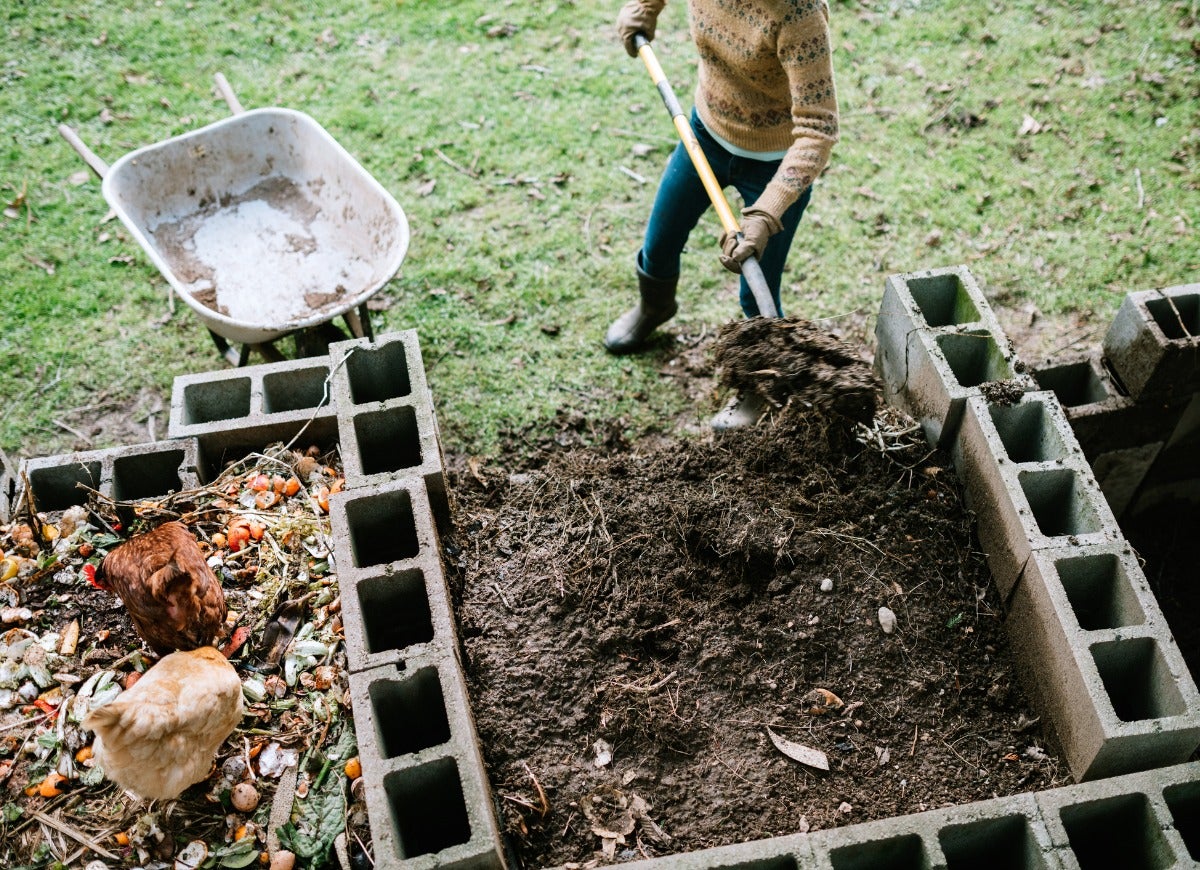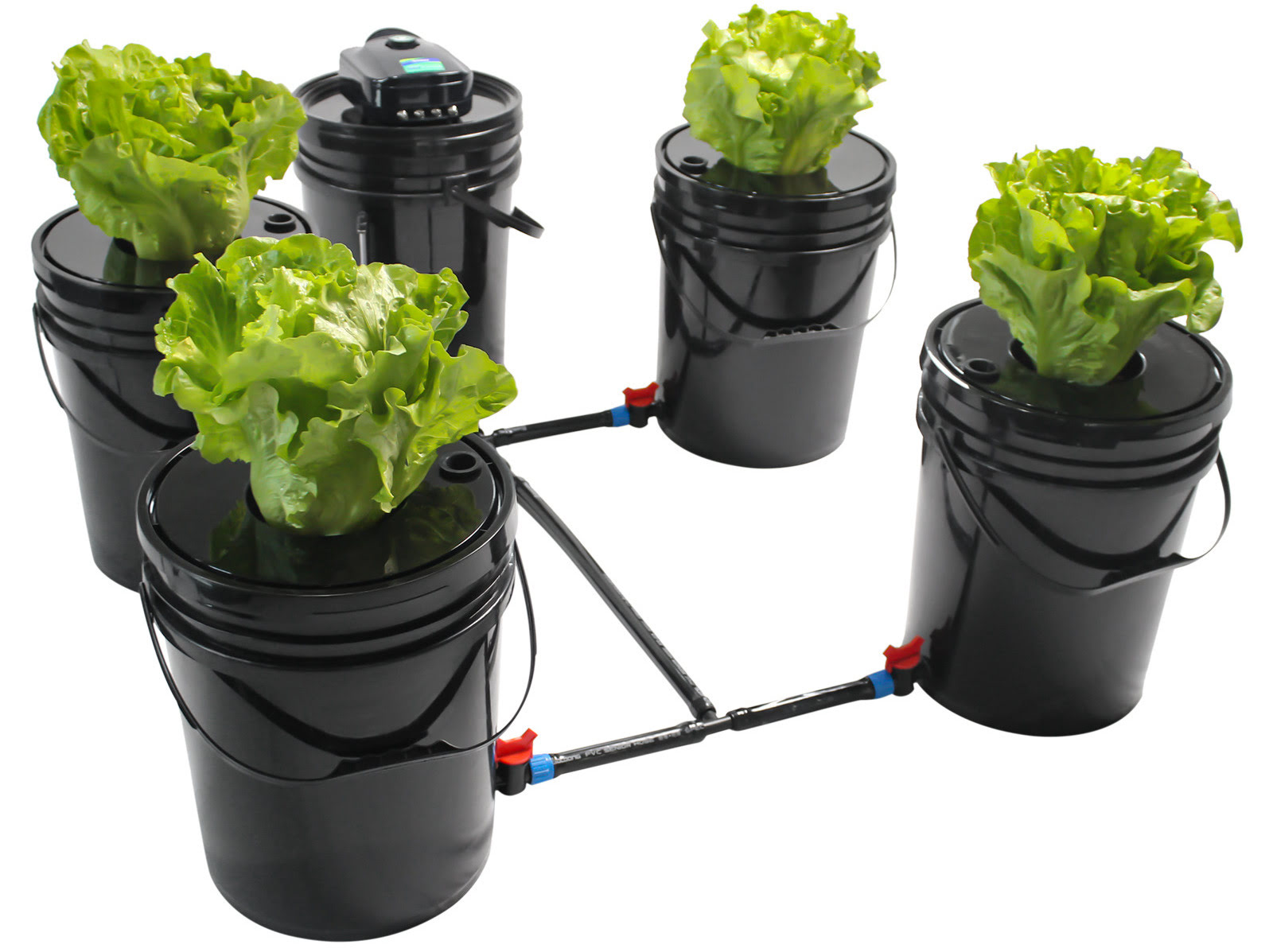Home>Gardening Tips and Tricks>Maximizing Yield>What Plants Grow Best In Hydroponics
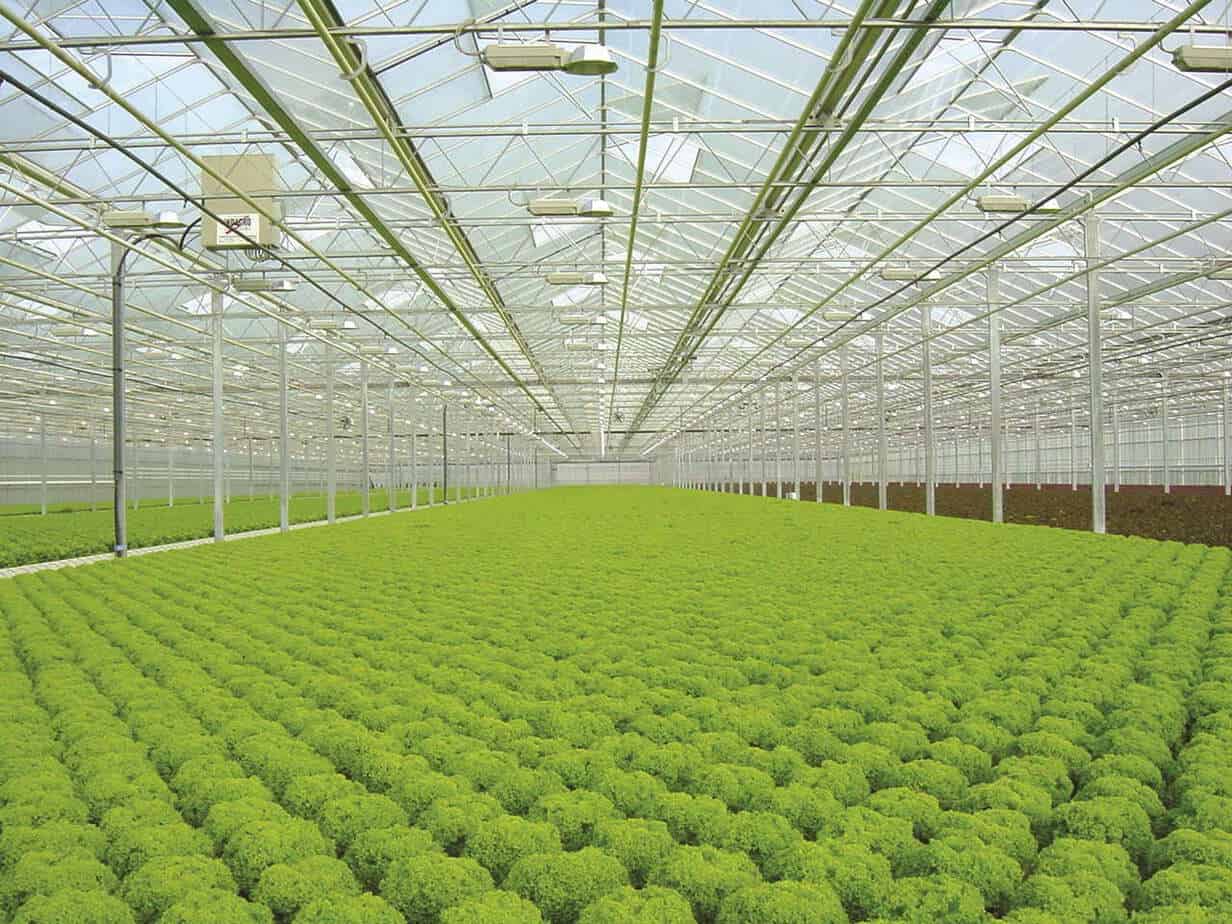

Maximizing Yield
What Plants Grow Best In Hydroponics
Modified: January 22, 2024
Discover the top plants for maximizing yield in hydroponics and achieve optimal results with our expert tips and techniques. Start your hydroponic garden today!
(Many of the links in this article redirect to a specific reviewed product. Your purchase of these products through affiliate links helps to generate commission for Chicagolandgardening.com, at no extra cost. Learn more)
Table of Contents
- Introduction
- Benefits of Hydroponics
- Choosing the Right Plants for Hydroponics
- Popular Hydroponic Plants
- Factors That Affect Plant Growth in Hydroponics
- Nutrient Solutions for Hydroponic Plants
- Hydroponic Systems for Different Plant Requirements
- Common Issues in Hydroponic Gardening
- Harvesting and Maintaining Hydroponic Plants
- Conclusion
Introduction
Welcome to the world of hydroponics, where plants are grown without soil and thrive in a water-based nutrient solution. This innovative method of gardening has gained immense popularity in recent years, offering numerous benefits for both commercial growers and home gardeners. With its ability to maximize yield and conserve resources, hydroponics is revolutionizing the way we grow plants.
So, what exactly is hydroponics? Essentially, it is a technique that enables plants to obtain all the necessary nutrients directly from water, eliminating the need for traditional soil-based cultivation. Instead, plants are supported by an inert growing medium such as perlite, vermiculite, or coconut coir, which helps anchor the roots and provide stability.
Hydroponics offers a range of benefits that make it an attractive option for growers. Firstly, it allows for year-round cultivation, irrespective of climate or seasonality. By providing a controlled environment, hydroponics enables plants to grow optimally, resulting in faster growth rates and higher yields. Additionally, this method requires significantly less water compared to traditional soil-based agriculture, making it a more sustainable choice.
Furthermore, hydroponics eliminates the risk of soil-borne pests and diseases, minimizing the need for harmful pesticides and reducing the impact on the environment. With the ability to grow plants in nutrient-rich water, hydroponics also ensures that plants receive an optimal balance of essential nutrients, resulting in healthier and more nutritious produce.
Whether you are a commercial grower aiming to maximize crop production or a hobbyist looking to grow fresh produce at home, hydroponics offers a versatile and efficient solution. However, it is essential to choose the right plants that are well-suited for this cultivation method. In the following sections, we will explore the different types of plants that thrive in hydroponics and the factors that influence their growth.
Benefits of Hydroponics
Hydroponics offers a multitude of benefits that differentiate it from traditional soil-based gardening. Let’s delve into some of the advantages that have made hydroponics a popular choice among growers:
- Maximized Yield: One of the primary reasons growers turn to hydroponics is its ability to produce higher yields compared to conventional farming methods. By providing a controlled environment with optimal growing conditions, hydroponics allows plants to grow faster and more efficiently, resulting in increased productivity.
- Water Conservation: Water scarcity is a growing concern worldwide. Hydroponics addresses this issue by using up to 90% less water compared to traditional soil-based gardening. This is achieved through recirculating systems, where nutrient-rich water is continuously reused, minimizing wastage and promoting sustainability.
- No Soil Required: Hydroponics eliminates the need for soil, which can be limiting and problematic in many regions. By cultivating plants without soil, growers have the freedom to create optimal growing environments, unbound by soil limitations. This flexibility also allows for cultivation in urban areas and places with limited land availability.
- Pest and Disease Control: Traditional farming methods often struggle with pests and diseases that can reduce yields and require extensive chemical use. In hydroponics, the absence of soil reduces the risk of soil-borne pests and diseases, minimizing the need for harmful pesticides. This creates a healthier growing environment and reduces the impact on the ecosystem.
- Year-round Cultivation: With hydroponics, growers can produce crops year-round, regardless of weather conditions. By providing a controlled environment, all aspects of plant growth can be optimized, including temperature, humidity, and light. This allows for consistent yields and a more reliable food supply, even during the offseason.
- Higher Nutritional Value: Hydroponically-grown plants often have higher nutritional values compared to conventionally-grown ones. By providing plants with an ideal balance of nutrients in the nutrient solution, hydroponics ensures that plants receive all the necessary elements for optimal growth. This leads to healthier and more nutritious produce for consumers.
These are just a few of the compelling reasons why hydroponics is gaining popularity in the field of agriculture. By maximizing yield, conserving resources, and providing a controlled growing environment, hydroponics offers a sustainable and efficient solution for growers of all scales.
Choosing the Right Plants for Hydroponics
When it comes to hydroponics, not all plants are created equal. Some plants are better suited for this cultivation method due to their adaptability to growing in a soil-less environment. To ensure success in your hydroponic garden, it is crucial to select the right plants that can thrive in water-based systems. Here are some factors to consider when choosing plants for hydroponics:
- Growth Habit: Plants with a compact growth habit like leafy greens (lettuce, spinach, kale) and herbs (basil, parsley, mint) are ideal candidates for hydroponics. These plants have shallow root systems and can be easily supported by the growing medium in hydroponic systems.
- Water Requirements: Consider the water needs of the plants you plan to grow. Some plants, like tomatoes and cucumbers, have higher water requirements compared to others. Make sure your hydroponic system can accommodate the water needs of the selected plants to ensure they receive adequate hydration.
- Light Requirements: Different plants have varying light requirements. Leafy greens, for example, can thrive in lower light conditions, while fruiting plants like peppers and strawberries require more intense light. Ensure that your hydroponic setup provides the necessary light levels for the specific plants you wish to grow.
- Growth Cycle: Consider the length of time it takes for plants to reach maturity. Some plants, like lettuce and herbs, have a relatively short growth cycle, making them suitable for quick harvests. Others, such as tomatoes and peppers, have longer growth cycles and may require more space and time to fully mature.
- Tolerance to Environmental Conditions: Assess the tolerance of the plants to environmental factors like temperature and humidity. Some plants, like lettuce and herbs, prefer cooler temperatures, while others, like tomatoes and peppers, thrive in warmer conditions. Choose plants that are well-suited to the environmental conditions in your hydroponic garden.
- Personal Preferences: Finally, consider your own preferences and the types of plants you enjoy growing and consuming. After all, the joy of gardening lies in nurturing and harvesting plants that bring you delight and satisfaction. Choose plants that align with your interests and culinary preferences.
By considering these factors, you can select the right plants that are well-suited for hydroponic cultivation. Remember to research specific plant requirements and consult with experienced hydroponic growers to ensure a successful and bountiful harvest.
Popular Hydroponic Plants
Hydroponics offers a wide range of possibilities when it comes to the variety of plants that can be successfully grown. From leafy greens to herbs, fruits, and even flowering plants, there are countless options for those venturing into hydroponic gardening. Here are some popular plants that thrive in hydroponic systems:
- Lettuce: Lettuce is a staple in hydroponic gardens. Varieties like Butterhead, Romaine, and Leaf Lettuce grow exceptionally well in nutrient-rich water. Lettuce has a relatively short growth cycle, making it ideal for continuous harvests.
- Herbs: Herbs like basil, parsley, cilantro, and mint are excellent choices for hydroponic gardens. They are compact in size, have shallow root systems, and can be easily grown in small containers. Plus, they add wonderful flavors and aromas to your culinary creations.
- Tomatoes: Tomatoes are a popular choice for hydroponic growers due to their delicious flavor and versatility in cooking. Compact varieties, such as Cherry or Grape Tomatoes, are particularly well-suited for hydroponics and can be grown vertically to maximize space.
- Cucumbers: With their vining growth habit, cucumbers are well-suited for hydroponic systems that support trellising or vertical gardening. Varieties like English or Persian cucumbers thrive in hydroponics and produce crisp and refreshing fruits.
- Peppers: Peppers, including bell peppers, chili peppers, and hot peppers, can be successfully grown in hydroponics. They require ample sunlight and warmer temperatures to thrive, making them a great choice for growers in controlled indoor environments.
- Strawberries: Hydroponic strawberries produce juicy and sweet fruits, making them a favorite among growers. Compact or trailing varieties are well-suited for hydroponic systems and allow for efficient use of space.
- Flowers: Hydroponics is not limited to edible plants. Many flowering plants, such as orchids, roses, and geraniums, can flourish in hydroponic systems. These plants can bring beauty and color to your indoor or outdoor space.
These are just a few examples of the plants that thrive in hydroponic environments. However, the possibilities are vast, and you can experiment with a wide range of crops to find the ones that suit your preferences and growing conditions best. With proper nutrient solutions, lighting, and care, you can enjoy bountiful harvests of your favorite plants through hydroponic gardening.
Factors That Affect Plant Growth in Hydroponics
Successful plant growth in hydroponics relies on maintaining optimal conditions that provide the necessary elements for plants to thrive. Several factors can impact plant growth and development in hydroponic systems. Here are some of the key factors to consider:
- Nutrient Solution: The nutrient solution is a vital component of hydroponics. It provides essential elements like nitrogen, phosphorus, potassium, and trace minerals necessary for plant growth. Maintaining a properly balanced nutrient solution, tailored to the specific needs of the plants being grown, is crucial for healthy development.
- pH Levels: pH levels refer to the acidity or alkalinity of the nutrient solution. Different plants have different pH preferences, and maintaining the appropriate pH range is essential for nutrient uptake and overall plant health. Most plants perform well in a slightly acidic to neutral pH range of 5.5 to 6.5.
- Temperature: Temperature plays a significant role in plant growth. Each plant has its own preferred temperature range, but generally, most hydroponic plants thrive between 65°F and 75°F (18°C to 24°C). Fluctuations in temperature outside of the optimal range can hinder growth and lead to stress or damage.
- Lighting: Adequate lighting is essential for photosynthesis, the process by which plants convert light energy into chemical energy for growth. Different plants have varying light requirements, including intensity, duration, and spectrum. Providing the appropriate lighting, whether through natural sunlight or artificial grow lights, is crucial for plant growth in hydroponic systems.
- Air Circulation: Good air circulation is essential to prevent the buildup of excess moisture, control humidity levels, and aid in the exchange of gases. Proper air movement helps prevent diseases, promote healthy transpiration, and ensure proper oxygenation of plant roots in hydroponic systems.
- Growing Medium: The choice of growing medium in hydroponics can influence plant growth. Common mediums include perlite, coco coir, vermiculite, and rockwool. Each medium has different water-retaining properties and air porosity, affecting nutrient absorption and root aeration. Selecting the appropriate growing medium for specific plants is crucial for optimal growth.
- Plant Density: The spacing or density of plants within a hydroponic system should be considered. Overcrowding plants can restrict airflow, create shading issues, and lead to competition for nutrients and water. Proper spacing ensures each plant has sufficient space for root development and receives adequate light and nutrients.
By carefully monitoring and adjusting these factors, growers can create an ideal environment for plant growth in hydroponics. Regular monitoring, proper maintenance, and adjustments to these variables will help ensure healthy and thriving plants throughout their growth cycle.
Nutrient Solutions for Hydroponic Plants
In hydroponics, providing plants with the right balance of nutrients is crucial for their growth and development. Nutrient solutions serve as the primary source of essential elements for plants in a soil-less environment. These solutions contain a carefully calibrated mix of macronutrients and micronutrients that are readily available to the plants. Here are some key considerations when it comes to nutrient solutions in hydroponics:
- Macronutrients: Plants require macronutrients in larger quantities for their growth. These include nitrogen (N), phosphorus (P), and potassium (K), often referred to as NPK. Nitrogen promotes leafy growth, phosphorus supports root development and flowering, and potassium aids in overall plant health and disease resistance.
- Micronutrients: In addition to macronutrients, plants also require trace amounts of micronutrients, such as iron (Fe), manganese (Mn), zinc (Zn), and copper (Cu), among others. These elements play vital roles in enzymatic functions, photosynthesis, and overall plant health.
- Balanced Ratio: Nutrient solutions should be formulated to provide an appropriate balance of macronutrients and micronutrients specific to the plants’ needs. Different growth stages may require adjustments to the nutrient solution ratios. Regular monitoring of nutrient levels and pH is crucial to maintain ideal conditions for plant growth.
- pH Adjustment: pH levels of the nutrient solution affect nutrient availability to plants. Most plants thrive in a slightly acidic to neutral pH range of 5.5 to 6.5. pH levels outside of this range can hinder nutrient uptake and lead to nutrient deficiencies or toxicities. Regular monitoring and adjustment of pH using pH regulators or pH-adjusting solutions is necessary to ensure optimal nutrient absorption.
- Pre-made vs. Custom Solutions: Nutrient solutions can be pre-made or custom-formulated. Pre-made solutions offer convenience and simplicity, as they come in ready-to-use formulations designed for specific plant types or growth stages. Custom solutions provide flexibility to tailor nutrient ratios based on specific plant requirements and can be adjusted as needed.
- EC/TDS Measurements: Electrical conductivity (EC) or total dissolved solids (TDS) measurements are used to measure the nutrient concentration in the solution. EC/TDS meters help in determining the strength of the nutrient solution and ensure it remains within the optimal range for plant growth. Regular monitoring and adjustment of the nutrient solution strength is important for maintaining balanced and effective nutrient delivery.
- Water Quality: The quality of water used to prepare the nutrient solution is crucial. It is important to use clean, filtered water that is free from contaminants and excessive mineral content. Impure water can impact nutrient absorption and lead to nutrient imbalances or plant health issues.
Properly formulated and balanced nutrient solutions provide hydroponic plants with the necessary elements for robust growth, high yields, and optimal nutrition. It is important to follow manufacturer instructions, conduct regular testing, and make adjustments as needed to ensure healthy and thriving plants in your hydroponic system.
Hydroponic Systems for Different Plant Requirements
Hydroponic systems come in various designs, each catering to different plant requirements and cultivation methods. The choice of hydroponic system depends on factors such as the type of plants being grown, available space, and desired level of automation. Here are some commonly used hydroponic systems that accommodate different plant requirements:
- Drip System: Drip systems are versatile and widely used in hydroponics. They involve delivering nutrient solution directly to the plant’s root zone through drip emitters or micro-tubing. Drip systems are suitable for a wide range of plants, especially those that prefer intermittent watering or require good aeration.
- NFT (Nutrient Film Technique) System: NFT systems involve a thin film of nutrient solution flowing over the bottom of a tilted or slightly inclined trough, with plant roots suspended in the film. This system provides constant nutrient flow and is commonly used for leafy greens and herbs due to its efficient use of water and nutrients.
- Flood and Drain (Ebb and Flow) System: Flood and drain systems periodically flood the growing medium with nutrient solution and then drain it back into a reservoir. This cycle provides oxygenation to the roots and is suitable for a wide range of plants, including larger ones such as tomatoes and peppers.
- Aeroponic System: Aeroponic systems suspend plant roots in the air and mist them with a nutrient solution. This system promotes high oxygenation and rapid growth, making it ideal for plants that thrive in aerated conditions, such as lettuce and herbs. However, it requires precise control of misting intervals.
- Wick System: Wick systems are the simplest and most passive hydroponic systems. They involve a growing medium with a wick that draws nutrient solution from a reservoir to the plant’s root zone. Wick systems are best suited for smaller plants with low nutrient and water requirements.
- Vertical System: Vertical systems maximize space utilization by growing plants vertically, one above the other. These systems use various techniques, such as stacking trays or vertical towers, and are suitable for a range of plants, including small vegetables, herbs, and strawberries.
- Aquaponics: Aquaponics combines hydroponics with aquaculture. In this system, plants are grown in nutrient-rich water derived from fish waste, which serves as a natural fertilizer. Aquaponics is well-suited for leafy greens, herbs, and some fruiting plants.
These are just a few examples of the hydroponic systems available. The choice of system depends on factors such as plant type, available space, budget, and personal preferences. It is important to select a system that aligns with your specific needs and provides an optimal environment for the plants to thrive and produce bountiful yields.
Common Issues in Hydroponic Gardening
While hydroponic gardening offers numerous benefits, like any cultivation method, it comes with its own set of challenges. Being aware of common issues in hydroponics can help growers identify and address problems promptly, ensuring the success of their crops. Here are some common issues faced in hydroponic gardening:
- Nutrient Imbalances: Achieving the correct balance of nutrients in the nutrient solution is crucial. Imbalances can lead to nutrient deficiencies or toxicities, adversely affecting plant growth and development. Regular monitoring of the nutrient solution’s pH and EC/TDS levels, as well as adjusting nutrient concentrations as needed, is essential.
- pH Fluctuations: pH levels play a critical role in nutrient availability to plants. Fluctuations in pH levels can affect nutrient uptake and lead to deficiencies or toxicities. Monitoring pH regularly and making necessary adjustments using pH regulators or pH-adjusting solutions is crucial to maintain optimal plant health.
- Disease and Pest Control: Hydroponic systems are not immune to diseases and pests. Fungal or bacterial diseases can spread quickly in the nutrient-rich environment, and pests like aphids or mites can infest plants. Regular inspection, implementing proper sanitation practices, and using organic pest control methods are important for disease and pest prevention.
- Root Diseases: Root diseases, such as root rot, can occur in hydroponic systems due to excessive moisture or poor oxygenation. Maintaining proper water circulation, avoiding overwatering, and ensuring adequate aeration can help prevent root diseases. Using beneficial microbes or root supplements can also promote root health.
- Temperature and Humidity Control: Temperature and humidity levels must be carefully controlled in hydroponic environments. High temperatures can stress plants and contribute to disease development, while high humidity can create a favorable environment for pathogens. Proper ventilation, cooling systems, and humidity control measures are necessary for maintaining optimal growing conditions.
- Lighting Issues: Inadequate or improper lighting can hinder plant growth in hydroponics. Insufficient light can lead to leggy growth or poor fruiting, while excessive light can cause heat stress or leaf burn. Providing the correct intensity, duration, and spectrum of light ensures optimal photosynthesis and plant development.
- Water Quality and Algae Growth: Poor water quality or excessive nutrients in the water can promote algae growth, leading to clogged systems or nutrient imbalances. Using clean, filtered water and implementing preventive measures, like light exclusion or periodic system cleaning, can help control algae growth.
- System Maintenance: Regular system maintenance is essential to prevent issues such as clogged lines, malfunctioning pumps, or failing timers. Cleaning and sanitizing the system, replacing worn-out components, and ensuring proper functioning of all system parts are crucial for smooth operation and healthy plant growth.
By proactively addressing these common issues in hydroponic gardening, growers can maintain optimal growing conditions and maximize the success of their crops. Regular monitoring, timely interventions, and proper system maintenance are key to overcoming challenges and fostering thriving hydroponic gardens.
Harvesting and Maintaining Hydroponic Plants
Harvesting and maintaining hydroponic plants require careful attention to ensure optimal yields and ongoing healthy growth. Proper techniques and practices will help you enjoy the fruits of your labor. Here are some essential steps for harvesting and maintaining hydroponic plants:
- Harvesting: Harvesting hydroponic plants should be done at the right time to ensure maximum flavor and nutritional value. Leafy greens and herbs can be harvested by trimming the outer leaves or cutting the entire plant near the base. Fruiting plants, like tomatoes or cucumbers, should be harvested when the fruits reach their desired size, color, and maturity.
- Post-Harvest Handling: After harvesting, it’s important to handle the plants with care. Properly clean and dry the harvested produce to remove excess moisture, as wet surfaces can promote the growth of pathogens. Store the harvested plants in appropriate containers or bags to maintain freshness and quality.
- Continued Nutrient Solution: While harvesting, it’s essential to continue providing a balanced nutrient solution to the remaining plants. Adjust nutrient concentrations as needed to accommodate the changing needs of the plants during different growth stages.
- Pruning and Maintenance: Regular pruning and maintenance help ensure healthy plant growth and prevent overcrowding. Remove any dead or diseased leaves, trim excessive growth, and thin out plants as needed to allow for proper airflow and light penetration. Pay attention to the overall health of the plants, checking for pests or nutrient deficiencies.
- Watering and Irrigation: Maintain a consistent watering schedule, ensuring that the plants receive adequate moisture without becoming waterlogged. Avoid overwatering, as it can lead to root rot or nutrient imbalances. Monitor the moisture levels in the growing medium and adjust watering as needed based on the specific requirements of the plants.
- Regular Monitoring: Regularly monitor the plant health, pH levels, and nutrient concentrations in the system. Keep an eye out for any signs of nutrient deficiencies, diseases, or pest infestations. Promptly address any issues that arise to prevent them from spreading and impacting the overall health of the plants.
- Cleaning and Sanitation: Regularly clean and sanitize the hydroponic system to prevent the buildup of algae, pathogens, or debris. Clean the grow trays, reservoirs, and irrigation lines, and replace or clean any filters or screens in the system. This helps maintain optimal growing conditions and prevent the occurrence of diseases or clogged systems.
- Record-Keeping: Maintain a record of your hydroponic gardening practices, including nutrient formulations, pH levels, lighting schedules, and any adjustments made. This documentation helps track the progress of your plants, identify successful practices, and make necessary adjustments for future cultivation cycles.
By following these guidelines for harvesting and maintaining hydroponic plants, you can ensure ongoing success and maximize the productivity of your hydroponic gardening endeavors. Consistent care, monitoring, and proper maintenance will help you enjoy a bountiful harvest of healthy and flavorful produce.
Conclusion
Hydroponics is a game-changer in the world of gardening, offering a sustainable and efficient solution for growing plants without soil. By providing a controlled environment, maximizing yield, and conserving resources like water, hydroponics is revolutionizing the way we cultivate a wide range of crops.
From leafy greens to herbs, fruits, and even flowering plants, hydroponics accommodates various plant types and their specific requirements. By selecting the right plants, maintaining proper nutrient solutions, and implementing the appropriate hydroponic system, growers can enjoy bountiful harvests and maximize their success.
However, it is important to be aware of challenges that may arise in hydroponic gardening. Nutrient imbalances, pH fluctuations, diseases, pests, and environmental factors like temperature and lighting can impact plant growth. Regular monitoring, proactive maintenance, and timely interventions are essential for overcoming these challenges and ensuring healthy and thriving plants.
Harvesting and maintaining hydroponic plants require attention to detail and adherence to proper techniques. From timely harvests and post-harvest handling to continued nutrient provision, pruning, and monitoring, growers can optimize their yields and enjoy the freshest produce.
Hydroponics offers not only the opportunity to grow fresh and nutritious food but also the ability to experiment, innovate, and be more sustainable in our agricultural practices. Whether you are a commercial grower or a hobbyist gardener, hydroponics provides a versatile and efficient means of cultivation.
So, why not embark on a journey into the world of hydroponic gardening? With the right knowledge, dedication, and the use of appropriate techniques, you can enjoy the rewards of this innovative method, maximizing the yield of your plants while conserving resources and reaping the benefits of fresh, healthy, and flavorful harvests.
